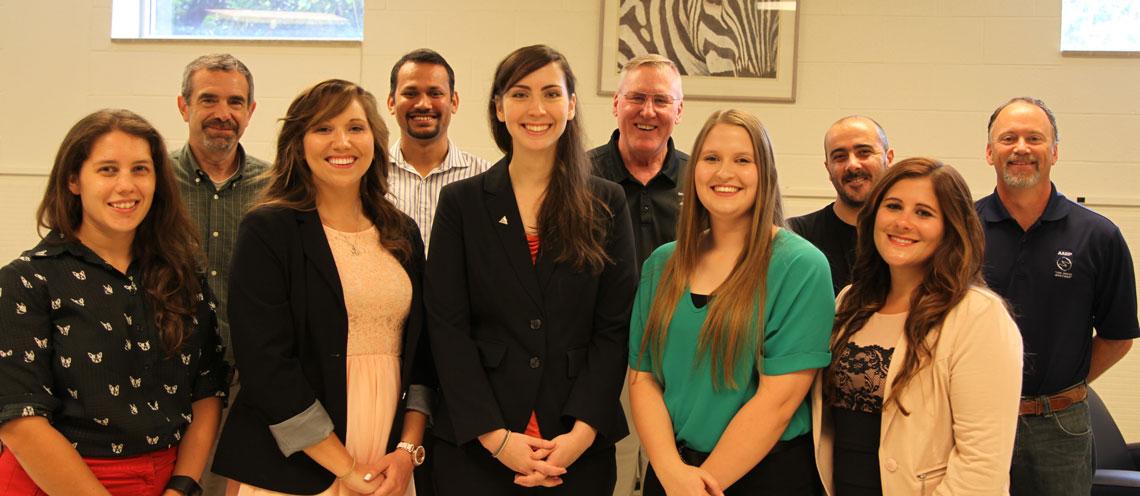
Summer Research Scholars Program
Tuesday, August 2, 2016
First row (left to right): Jenny Hardy, Alexis Sirois, Cassandra Rodenbaugh, Casey Landis, and Kelsey Bentz. Also participating but not pictured was Samantha Hancock. Second row (left to right): Drs. Jerry Malayer, Ashish Ranjan, Chris Ross, Joao Brandao and Todd Holbrook.
Six first and second year veterinary students at Oklahoma State University’s Center for Veterinary Health Sciences spent 12 weeks conducting biomedical research as part of the center’s Summer Research Scholars Program.
“The program is designed to identify talented and highly motivated veterinary students interested in exploring a career in veterinary research and then provide those students with an outstanding biomedical research summer training experience,” explains Dr. Ashish Ranjan, one of three faculty directors of the program. “We need more veterinarians involved in biomedical research. The overarching objective of this program is to persuade outstanding veterinary students to pursue a career in biomedical research.”
Program participants are:
· Kelsey Bentz (’18), mentored by Dr. Mason Reichard, studied “Susceptibility of Amblyomma americanum, Dermacentor variabilis and Rhipicephalus sanguineus to select acaricides.” Bentz found that these three most common species of ticks in the United States are susceptible to the pesticides that were tested in her project.
· Samantha Hancock (’19), mentored by Dr. Todd Holbrook, researched “Characterization of a novel tick-transmitted Ehrlichia spp. infection in horses.” Hancock was able to show that horses exposed to A. americanum develop antibodies to Ehrlichia spp. and may potentially remain transiently infected.
· Jenny Hardy (’18), mentored by Drs. Susan Little and Brian Herrin, studied “A serological survey of horses in U.S. to Ehrlichia spp.” The goal was to determine the prevalence of horses exposed to Ehrlichia spp. in five geographically distinct U.S. diagnostic labs. She was able to show that areas with a high population of the known vector had more seropositive horses than regions where the tick is less common.
· Casey Landis (’19), mentored by Drs. Jerry Malayer and Ashish Ranjan, researched “Characterization of a co-culture model for observation of Francisella tularensis infection.” Landis created a liver model and infected it with a vaccine strain of Francisella tularensis to observe how the infection interacts with cells in the body.
· Cassandra Rodenbaugh (’19), mentored by Dr. Joao Brandao, studied “Sonoclot® evaluation of whole blood coagulation in chickens.” Since avian blood takes longer to clot than mammalian blood, Rodenbaugh was testing a new methodology using Sonoclot® Coagulation and Platelet Function Analyzer to measure the coagulation time of blood samples from hens.
· Alexis Sirois (’19), mentored by Dr. Jerry Ritchey, researched “Examination of genetic variation in the extracellular domain of the beta-2-integrin (DC18) in cattle as a marker for resistance/susceptibility to bovine respiratory disease.” Sirois sequenced blood samples from feedlot cattle to try to determine if there is a genome responsible for some cattle in a feedlot getting sick while others in the same lot stay healthy.
“All of the students did a great job,” added Ranjan. “We want to thank our sponsors for helping us provide this research opportunity for veterinary students.”
Sponsors include the Morris Animal Foundation and Oklahoma State University’s Office of Research and Graduate Education and the Center for Veterinary Health Sciences.
